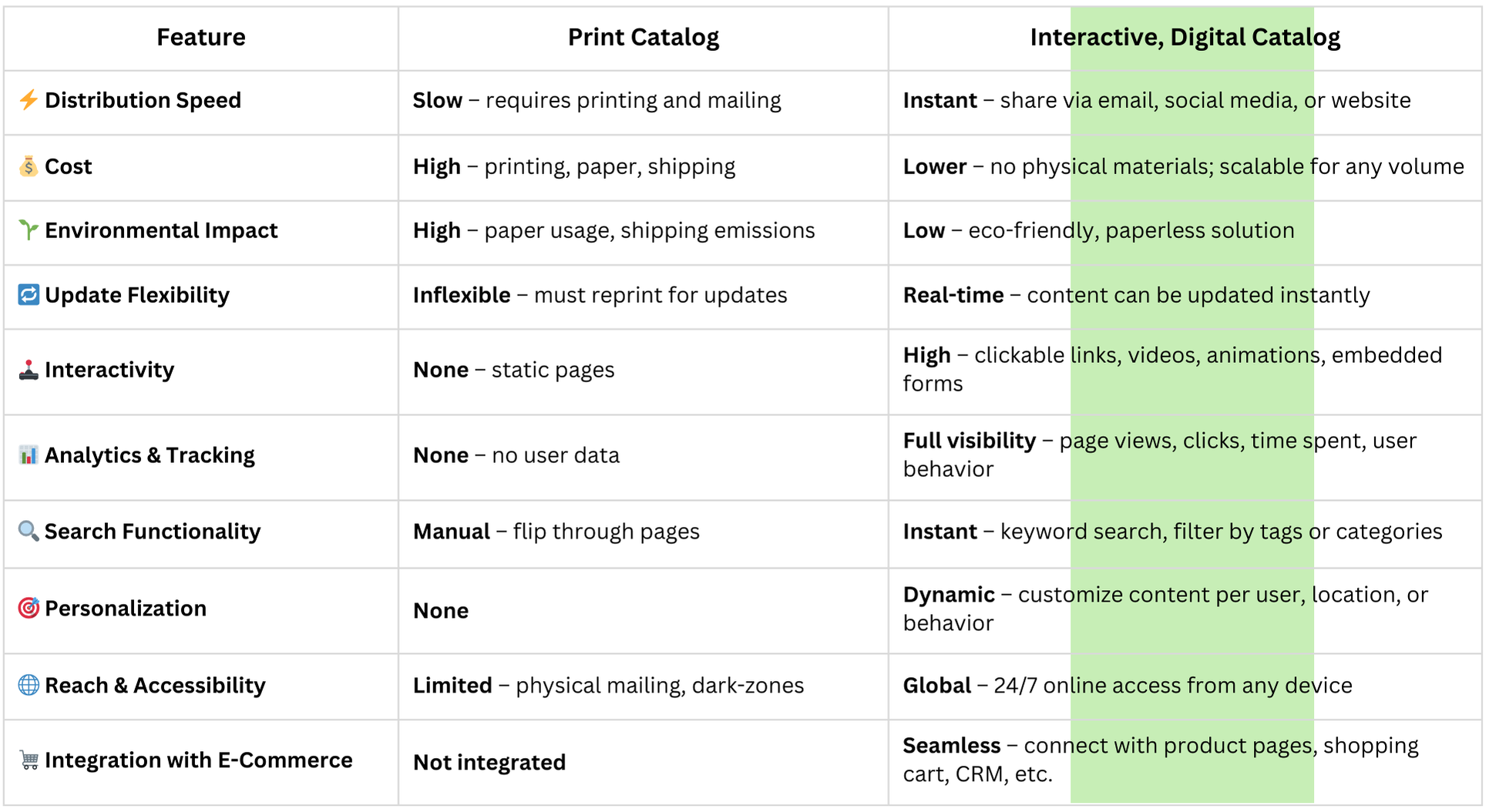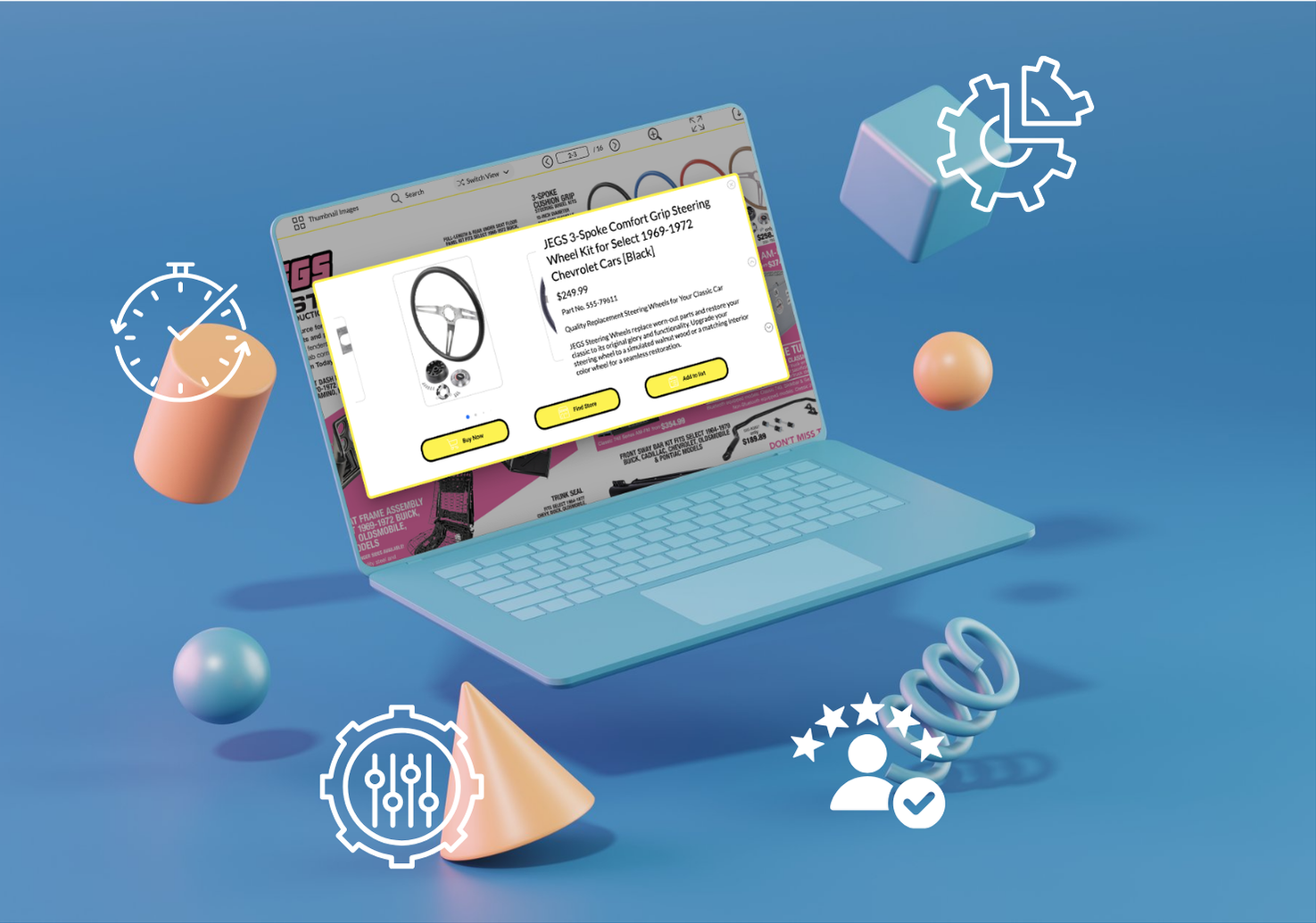Why Trade Manufacturers Should Replace Print Catalogs With Digital Catalogs
Across the industrial supply chain, success depends on delivering accurate, accessible product information quickly.
For decades, print catalogs have played a foundational role in the industry. But as buyers move online and supply chains demand real-time data, many manufacturers are asking: is it time to evolve our catalog experience?
This blog isn’t necessarily about ditching print completely. It’s about helping manufacturers explore how interactive digital catalogs can complement, streamline, or even modernize parts of their marketing strategy.
Print Catalogs Are Holding Trade Manufacturers Back
According to IBISWorld, The U.S. printing industry has experienced a revenue decline of 2.8% annually over the past five years, as a result of a shift towards e-commerce and digital solutions (Printing in the US – Market Research Report (2015-2030), IBISWorld).
Here are a few reasons as to why:
Print is time consuming to update
Print catalogs often require at least 3 to 6 month lead time ahead of the selling year, which can result in outdated pricing, discontinued products, or missing new releases by the time they’re in use. In industries where product specifications change frequently, these delays can create confusion for contractors and distributors.
High printing and distribution costs
Printing and distributing physical catalogs is becoming an increasingly costly endeavor.
According to the Printing Industries of America, businesses report that rising labor, paper, and logistics costs have significantly driven up expenses, with some companies spending well millions of dollars annually to produce and mail printed catalogs (2022-23 State of the Industry Report, Printing United Alliance)
While print may still have a role in certain brand strategies, many manufacturers are reallocating part of that budget to digital catalog solutions.
Limited product visibility and reach
A physical catalog isn’t searchable, indexable, or clickable. Contractors on job sites or procurement teams in the office often want to quickly filter, find, and compare SKUs which is something paper can’t do without flipping page after page.
Print distribution also comes with limitations, especially in “dark zones” where certain regions restrict or prohibit delivery, making it even harder to reach and acquire new customers.
Check out an overview graph of the hidden costs that come with print:

What are the Benefits of Switching to Digital Catalogs
A PDF on your website isn’t a true digital catalog.
It lacks searchability, delivers a poor mobile experience, isn’t integrated with your eCommerce or ordering system, and is difficult to update when products or prices change.
It also provides no data or insights into what your customers are engaging with, leaving sales and marketing teams in the dark about which products are driving interest before purchase decisions.
Digital catalogs don’t have to replace print, but they do unlock flexibility, real-time updates, and a smoother, data-informed customer experience.
Here’s how:
Real-time updates and inventory
Need to change a product spec, update pricing, or remove an out-of-stock item? With a digital catalog, updates happen instantly with no need to reprint or redistribute anything.
Improved customer experiences for contractors and suppliers
Digital catalogs can be mobile-friendly, searchable, and filterable. This is especially useful for tradespeople in the field, sales reps on the go, or procurement teams reviewing technical data online.
Integration with online product catalog systems
Digital catalogs can connect to your CRM, ERP, or e-commerce platform which enables you to track which products are viewed most, capture leads, or streamline the quoting process.
Customizable mini catalogs for promotions and segments
Unlock the ability to create mini catalogs from your core offering. Simplify your large book catalogs. Whether it’s for a seasonal promotion, a specific product category, or a key customer segment, you can quickly create targeted catalogs without starting from scratch or reprinting large books.
You can read more about digital catalogs here.

Why Manufacturers Are Taking a Hybrid Approach
While print continues to be relevant today, it is no longer enough. That’s why many companies are choosing to either make the switch to digital or adopt both traditional and digital approaches. Here are some ways to incorporate the best of both worlds:
Reduce print runs and reallocate part of that budget to create interactive online catalogs
Embedding QR codes in their printed materials to lead buyers to a digital experience
Offering downloadable catalogs as a bridge between full e-commerce and static PDFs
Whether you’re exploring your first digital solution or refining an existing one, the shift doesn’t have to be “all or nothing.”
How to Get Started With a Digital Catalog
At Red Pepper Digital, we help manufacturers modernize how their product information is shared with tools that make it easy to build interactive, brand-aligned digital catalogs.
Whether you’re looking to:
Reduce your print overhead
Add a digital layer to your existing sales materials
Or explore a phased approach to going digital
We’d be happy to walk you through how it could look for your business.
— — —
Book a free demo to see how we can lift your digital experience.






